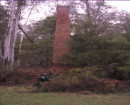EIGHT HOUR MONUMENT
RUSSELL STREET MELBOURNE, MELBOURNE CITY
-
Add to tour
You must log in to do that.
-
Share
-
Shortlist place
You must log in to do that.
- Download report







Statement of Significance
What is significant?
The Eight Hour Movement Monument has been located at the corner of Russell & Victoria Streets in Melbourne since 1923. The Eight Hour Movement started in Melbourne in early 1856 to improve workers conditions. On April 21 1856 stone masons working at the University site downed tools and marched on Parliament House, which was also being built at this time. A large number of other important public buildings in Melbourne were also being built and this had increased the demand for skilled workers in the building trade, leaving these workers in a strong position to negotiate better wages and conditions. The stone masons were seeking eight hours labour, eight hours rest, eight hours recreation. The building trades in Melbourne were some of the first workers in the world to achieve these conditions. The right to an eight hour day did not immediately apply to all workers, but the movement provided the impetus for other trade unions to agitate for similar conditions.
After this victory the movement had an annual celebration in April with a street procession and, later, a public holiday. The procession was held on or close to the April 21 date as possible. The Eight Hours Day was to become the symbolic festival of colonial labour. The public holiday for the 'eight hour day' or Labour Day as it came to be known in the twentieth century was granted in 1879. The Eight Hour day procession and holiday was changed to March so as not to compete with the Anzac Day march and holiday after the first World War. The procession itself was very popular with huge crowds in the late nineteenth and early twentieth century, but attendance became sparser in the twentieth century and the procession was abandoned altogether in 1952. The Moomba Festival took over the Labour day holiday in the mid 1950s and various attempts have been made to re-capture the original meaning of the Labour day holiday.
In the late 1880s a National Monument Sub committee of Trades Hall was formed to organise and raise subscriptions for a monument. The site was chosen in 1890 in the Carpentaria Reserve (now the Gordon Reserve VHR 47) in Spring Street adjacent to the Parliament Buildings. The Monument was to commemorate the pioneers of the Eight hour movement and act as a focal point for the annual procession.
The original design for the monument was by the prominent sculptor Percival Ball, and depicted allegorical life size figures. The 1890s economic depression was, however, not the best time to be seeking contributions and the project lapsed. Instead early in the twentieth century Ball created a simpler (and cheaper) design. This monument is made of Harcourt granite column topped with the figures 888 and a globe encircled by the words 'Rest, Labour & Recreation'. The monument was unveiled by surviving pioneers of the 8 Hour movement with ribbons and speeches on 21 April 1903. The eight hour procession was re-routed to finish at the new monument.
In the early 1923 the Monument was moved from Carpentaria Place, although the motives for its removal remain unclear, the City of Melbourne went to considerable expense to move the monument to its present site at the corner of Russell and Victoria Streets opposite the Trades Hall. There is a suggestion that the move occurred so that the eight hour procession could be changed and the Monument became the beginning of the procession rather than the end. The monument was unveiled in January 1923 at its current site.
How is it significant?
The Eight Hour Monument is of historical and social significance to the state of Victoria.
Why is it significant?
The Eight Hour Monument is of historical significance to the State of Victoria for its association with the Eight Hours day movement. The granting of the Eight Hour day saw the development of organised labour in Australia, and the granting of wages and conditions that lead to Australia being seen as the 'working mans paradise' in the late 19th century.
The Eight Hour Monument is of historical significance as a part of the commemorative process of colonial history, the desire to commemorate the Eight hour movement was a part of the process of creating a uniquely Australian identity and the monument itself is an important artefact of the making of Australian history.
The Eight Hour Monument is of social significance for many people as a symbol of labour activism and a place where the Eight hour movement continues to be remembered and celebrated.
The Eight Hour Monument is of aesthetic significance as a simple and elegant monument by the prominent sculptor Percival Ball in1903.
-
-
EIGHT HOUR MONUMENT - Permit Exemptions
General Exemptions:General exemptions apply to all places and objects included in the Victorian Heritage Register (VHR). General exemptions have been designed to allow everyday activities, maintenance and changes to your property, which don’t harm its cultural heritage significance, to proceed without the need to obtain approvals under the Heritage Act 2017.Places of worship: In some circumstances, you can alter a place of worship to accommodate religious practices without a permit, but you must notify the Executive Director of Heritage Victoria before you start the works or activities at least 20 business days before the works or activities are to commence.Subdivision/consolidation: Permit exemptions exist for some subdivisions and consolidations. If the subdivision or consolidation is in accordance with a planning permit granted under Part 4 of the Planning and Environment Act 1987 and the application for the planning permit was referred to the Executive Director of Heritage Victoria as a determining referral authority, a permit is not required.Specific exemptions may also apply to your registered place or object. If applicable, these are listed below. Specific exemptions are tailored to the conservation and management needs of an individual registered place or object and set out works and activities that are exempt from the requirements of a permit. Specific exemptions prevail if they conflict with general exemptions. Find out more about heritage permit exemptions here.Specific Exemptions:General Conditions: 1. All exempted alterations are to be planned and carried out in a manner which prevents damage to the fabric of the registered place or object. General Conditions: 2. If there is a conservation policy and plan approved by the Executive Director, all works shall be in accordance with it. Note: The existence of a Conservation Management Plan or a Heritage Action Plan endorsed by Heritage Victoria provides guidance for the management of the heritage values associated with the site. It may not be necessary to obtain a heritage permit for certain works specified in the management plan. General Conditions: 3. Nothing in this determination prevents the Executive Director from amending or rescinding all or any of the permit exemptions. General Conditions: 4. Nothing in this determination exempts owners or their agents from the responsibility to seek relevant planning or building permits from the responsible authorities where applicable. Public Safety and Security : The following public safety and security activities are permit exempt under section 66 of the Heritage Act 1995, a) public safety and security activities provided the works do not involve the removal or destruction of any significant above-ground structures or sub-surface archaeological artefacts or deposits; b) the erection of temporary security fencing, scaffolding, hoardings or surveillance systems to prevent unauthorised access or secure public safety which will not adversely affect significant fabric of the place including archaeological features; c) development including emergency stabilisation necessary to secure safety where a site feature has been irreparably damaged or destabilised and represents a safety risk to its users or the public. Note: Urgent or emergency site works are to be undertaken by an appropriately qualified specialist such as a structural engineer, or other heritage professional. Signage and Site Interpretation : The following Signage and Site Interpretation activities are permit exempt under section 66 of the Heritage Act 1995, a) signage and site interpretation activities provided the works do not involve the removal or destruction of any significant above-ground structures or sub-surface archaeological artefacts or deposits; b) the erection of non-illuminated signage for the purpose of ensuring public safety or to assist in the interpretation of the heritage significance of the place or object and which will not adversely affect significant fabric including landscape or archaeological features of the place or obstruct significant views of and from heritage values or items; c) signage and site interpretation products must be located and be of a suitable size so as not to obscure or damage significant fabric of the place; d) signage and site interpretation products must be able to be later removed without causing damage to the significant fabric of the place; Note: The development of signage and site interpretation products must be consistent in the use of format, text, logos, themes and other display materials. Note: Where possible, the signage and interpretation material should be consistent with other schemes developed on similar or associated sites. It may be necessary to consult with land managers and other stakeholders concerning existing schemes and strategies for signage and site interpretation. Landscape Permit Exemptions* Repairs, conservation, and maintenance to hard landscape elements, steps, paths, paths and gutters, drainage and irrigation systems, edging, and fences.
* The process of gardening; mowing, hedge clipping, bedding displays, removal of dead plants, disease and weed control, emergency and safety garden works.EIGHT HOUR MONUMENT - Permit Exemption Policy
It is the purpose of the permit exemptions to enable routine maintenance and repairs which do not damage the significant fabric of the place, or diminish its cultural significance.
-
-
-
-
-
FORMER CARLTON AND UNITED BREWERY
 Victorian Heritage Register H0024
Victorian Heritage Register H0024 -
ROSAVILLE
 Victorian Heritage Register H0408
Victorian Heritage Register H0408 -
MEDLEY HALL
 Victorian Heritage Register H0409
Victorian Heritage Register H0409
-
'Mororo' 13 Oxford Street, Malvern
 Stonnington City
Stonnington City -
1 Arnold Street
 Yarra City
Yarra City -
1 Austin Street
 Yarra City
Yarra City
-
-












